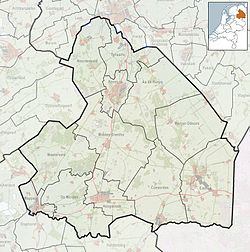Nieuw-Schoonebeek | |
|---|---|
 Churchtower in Nieuw-Schoonebeek | |
Location in province of Drenthe in the Netherlands | |
| Coordinates: 52°38′N6°59′E / 52.633°N 6.983°E | |
| Country | Netherlands |
| Province | Drenthe |
| Municipality | Emmen |
| Established | 1814 |
| Area | |
• Total | 17.69 km2 (6.83 sq mi) |
| Elevation | 14 m (46 ft) |
| Population (2021) [1] | |
• Total | 1,285 |
| • Density | 72.64/km2 (188.1/sq mi) |
| Postal code | 7761 |
| Dialing code | 0591 |
Nieuw-Schoonebeek is a village in the Netherlands and is part of the Emmen municipality in Drenthe.




